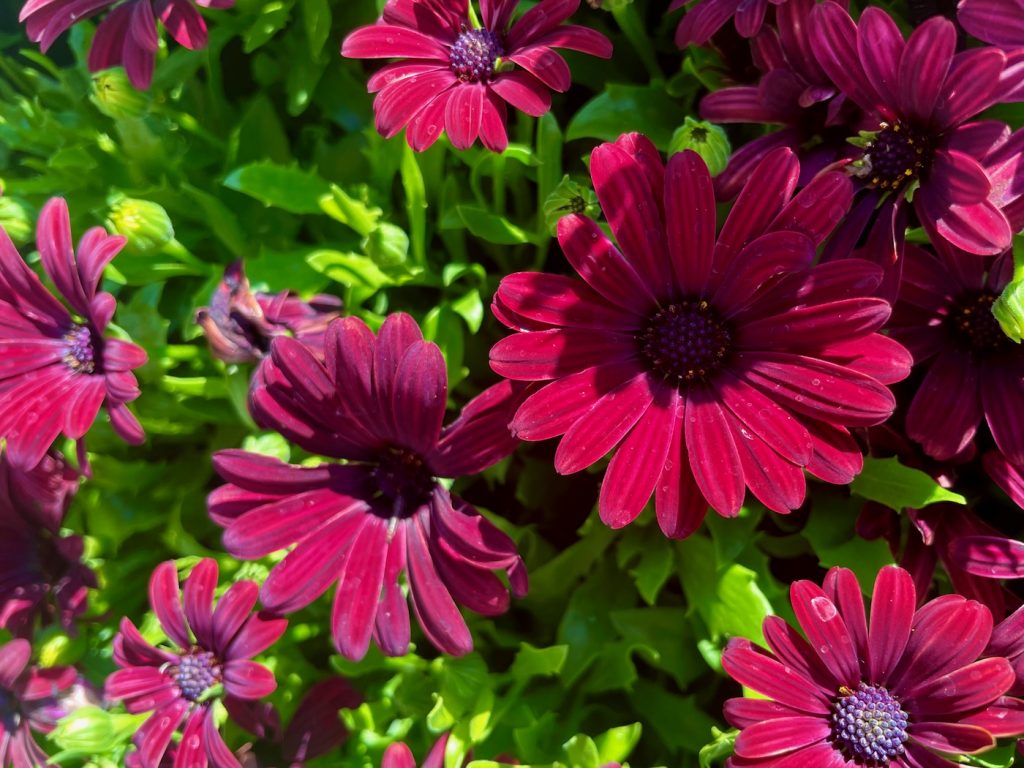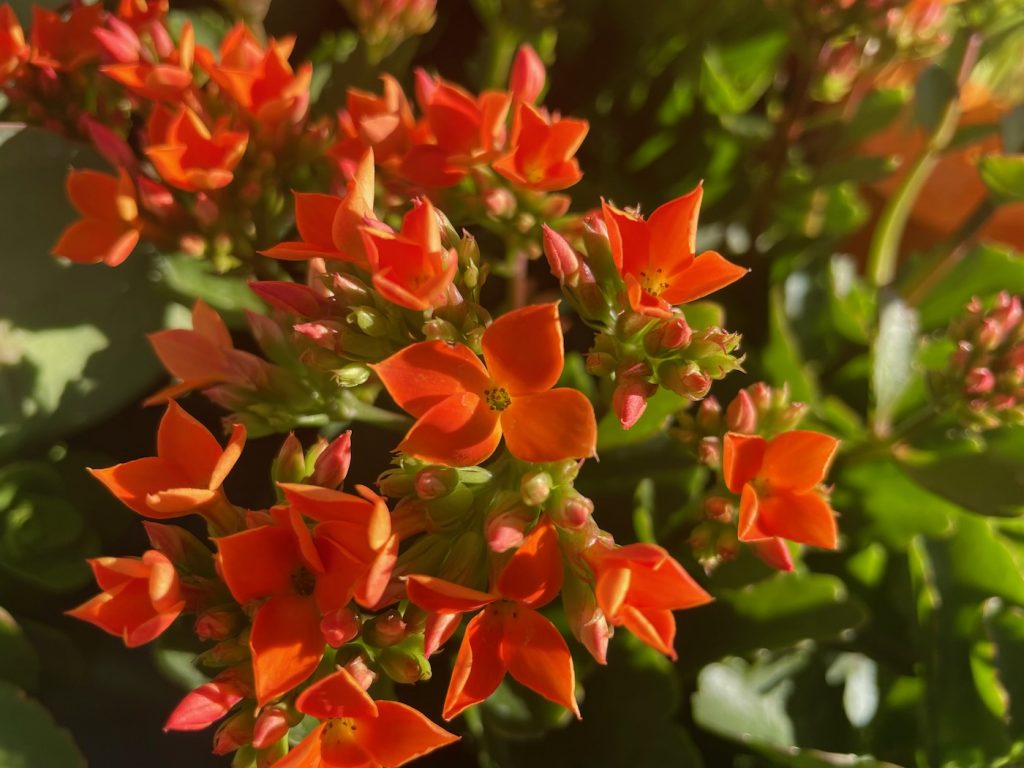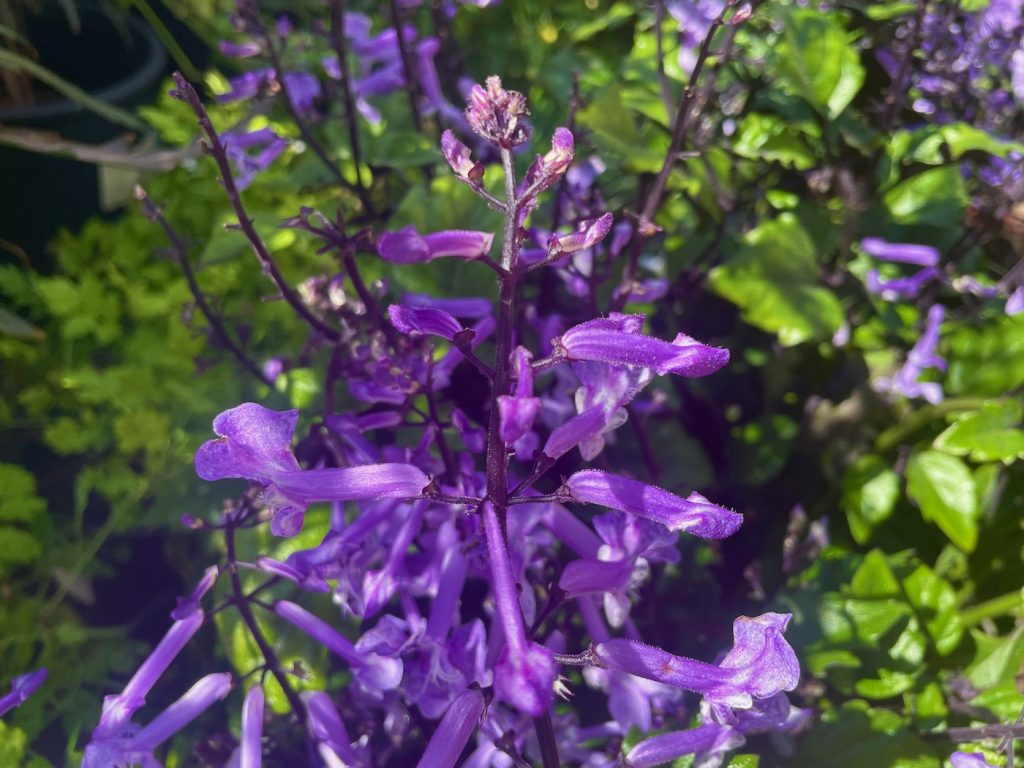Polemonium caeruleum, commonly known as Jacob’s Ladder, is a herbaceous perennial plant belonging to the Polemoniaceae family. Native to the mountains of Europe, it has been cherished for centuries for its delicate and captivating beauty. The name “Jacob’s Ladder” refers to the ladder-like arrangement of its pinnate leaves.
Polemonium caeruleum is a clump-forming perennial that reaches a height of about 12-24 inches (30-60 cm) and spreads up to 12-18 inches (30-45 cm) wide. Its attractive fern-like foliage consists of numerous small leaflets arranged in a ladder-like pattern along the stem. The leaflets are usually bright green, but some cultivars may exhibit variegated or bronze tones.
In late spring to early summer, Polemonium caeruleum produces clusters of bell-shaped flowers atop slender stems. The flowers exhibit a captivating shade of sky blue, occasionally with hints of violet or white. Each individual flower measures around 1 inch (2.5 cm) in diameter and features five petals with a contrasting yellow or white center. These blooms provide a charming addition to any garden or flower bed.
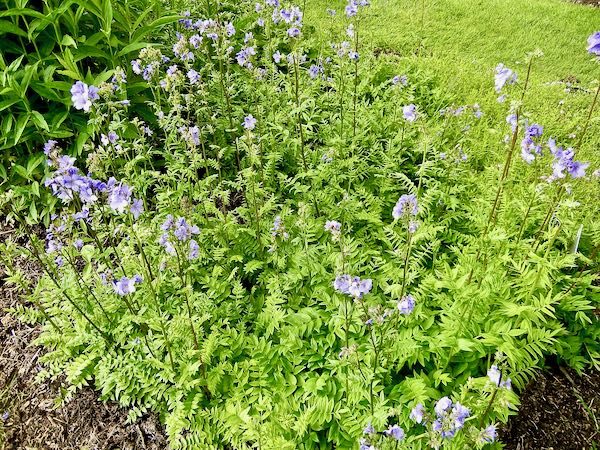
How to grow Polemonium caeruleum:
Light Requirements: Polemonium caeruleum thrives in partial shade to full sun conditions. It can tolerate some shade, particularly in regions with hot summers. Plant it in a location that receives a few hours of direct sunlight each day, preferably in the morning or late afternoon, while providing some protection from the intense midday sun.
Soil Type: This perennial prefers well-draining soil that is rich in organic matter. Amend heavy clay soils with compost or well-rotted organic matter to improve drainage and provide essential nutrients. A slightly acidic to neutral pH range of 6.0-7.0 is ideal for optimal growth and development.
Moisture Needs: Polemonium caeruleum thrives in evenly moist soil. While it prefers soil that is consistently moist, avoid waterlogged conditions that can lead to root rot. Regular watering during dry periods is crucial to keep the soil adequately moist. Applying a layer of organic mulch around the plant can help retain moisture and suppress weed growth.
Temperature Tolerance: Jacob’s Ladder is well-suited to temperate climates and can tolerate cold winters. It grows best in USDA hardiness zones 3-7. In regions with hot summers, providing partial shade or ensuring adequate soil moisture can help prevent stress and maintain plant health.
Pruning and Deadheading: Regular deadheading of faded flowers promotes prolonged blooming and prevents self-seeding. After the flowering period, you can also trim back the plant to encourage fresh growth and maintain a tidy appearance. Pruning can be done in early to mid-summer or after the blooming season.
Propagation: Propagate Polemonium caeruleum through division or from seed. The division is typically done in early spring or early autumn when the plant is dormant. Carefully dig up the clumps, ensuring each division has sufficient roots and shoots, and replant them in suitable locations. Collecting seeds after the flowering period and sowing them in a prepared seedbed can also yield new plants.
Pests and Diseases: Jacob’s Ladder is relatively resistant to pests and diseases. However, it may occasionally attract aphids, slugs, or snails. Regular monitoring and applying appropriate organic pest control methods, such as handpicking or using natural repellents, can help manage these issues. Ensuring good airflow around the plant by providing adequate spacing and avoiding overcrowding can also prevent the development of fungal diseases, including powdery mildew.
Fertilization: While not overly demanding, Polemonium caeruleum benefits from occasional fertilization to support healthy growth and abundant flowering. Apply a balanced, slow-release fertilizer in early spring or top-dress the soil with compost or well-rotted manure. Follow the package instructions for the appropriate dosage and frequency, taking care not to over-fertilize, as this can lead to excessive foliage growth with reduced flowering.
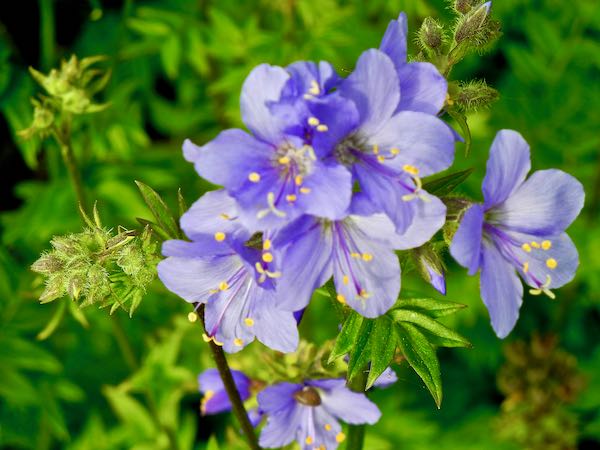
Wildlife Attraction: Jacob’s Ladder is known to attract pollinators such as bees and butterflies with its nectar-rich flowers. By cultivating this plant in your garden, you can contribute to supporting local pollinator populations. The delicate blooms and foliage may also provide habitat and shelter for beneficial insects.
Winter Care: In regions with harsh winters, Polemonium caeruleum benefits from a layer of mulch to protect the roots from freezing temperatures. Apply a 2-3 inch (5-8 cm) layer of organic mulch, such as straw or shredded leaves, around the base of the plant in late autumn. This helps insulate the soil, prevent temperature fluctuations, and promote winter survival.
By following these care guidelines, you can cultivate a thriving and beautiful Polemonium caeruleum in your garden. Its graceful foliage, charming flowers, and adaptability to various growing conditions make it a delightful addition to borders, woodland gardens, or shaded areas. Enjoy the enchanting beauty of Jacob’s Ladder and the joy it brings to your outdoor space.

